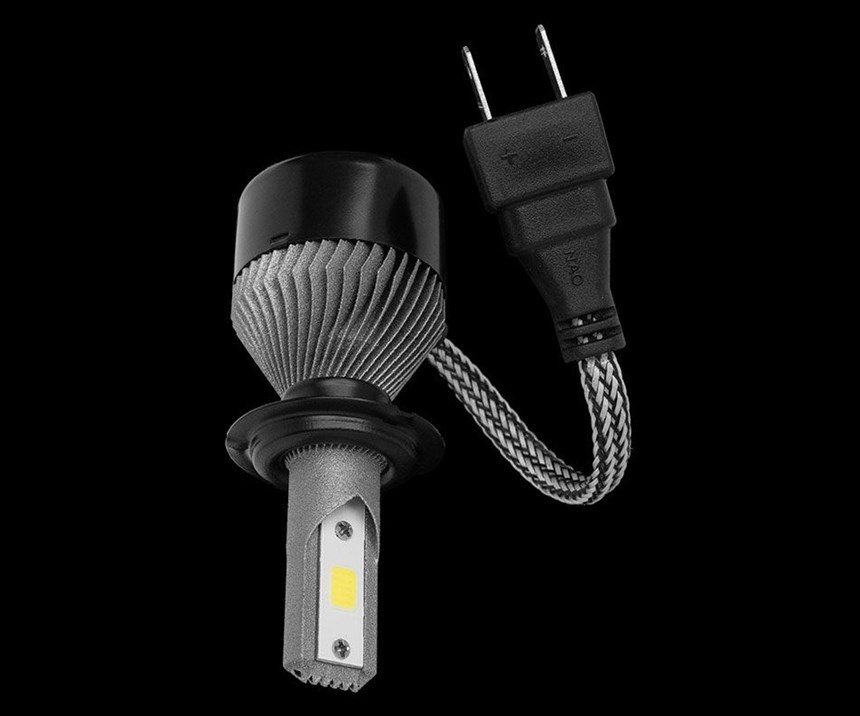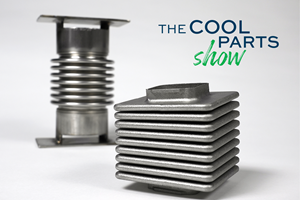Optimized LPBF Reduces Cost Per Part by 90 Percent
Through a combination of laser powder-bed fusion, design and optimization technology, Betatype reduced the cost of an automotive part from more than $40 to less than $4.
High volumes, productivity and cost-per-part are often cited as shortcomings of additive manufacturing (AM) for production applications in industries such as automotive. But AM process optimization that boosts productivity can reduce cost and support greater volumes. Betatype, a developer of AM optimization technology, recently worked on an automotive project using laser powder-bed fusion (LPBF) to produce 384 qualified metal parts in a single build, leveraging design and optimization strategies to reduce the cost-per-part.
Founded in 2012, Betatype has developed “Engine,” a data processing platform for managing and controlling multi-scale design. The technology can be applied to design complex parts that could not be easily built through traditional processes. Data processing also makes it possible to manage and optimize every tool path within each part, the company says, by shortening laser scan paths and delays. Geometry-driven control allows for the selection and application of laser parameters on an exposure to exposure level, enabling greater quality control and more efficient melting.
With the right part design, tool paths and parameters, additive manufacturing can be a more cost-effective method of production, as illustrated in Betatype’s manufacture of heatsinks for LED headlights. Typically, these components require comparatively large heatsinks which are often actively cooled. Betatype recognized that the specific geometry for these metal parts made them ideal for producing with LPBF.
By considering the LPBF process at the initial design stage of the component, Betatype was able to design a part with built-in support features, which allowed multiple headlight parts to be stacked on top of each other without the need for additional supports. Full stacking is often difficult with LPBF due to the thermal stresses involved in the layer process; by intelligently designing the structure to reduce thermal stresses, Betatype was able to make it a viable option with minimal thermal distortion. It was then possible to snap apart the finished parts by hand, without the need for further postprocessing.
For the collective 384 parts, Betatype was able to reduce build time from 444 hours to under 30 hours. Reducing the build time for these parts also reduced cost-per-part, from upwards of $40 to under $4.
The design of the part and supports enabled a series of parts to be “nested’” together to maximize the build volume, resulting in 384 parts being produced in one go within a single build envelope by Progressive Technology on an EOS 280M system.
Through specific control parameters, the exposure of the part in each layer was reduced to a single tool path, with minimal delays in between. This toolpath strategy, coupled with Betatype’s optimization algorithms and process IP, reduced the build time of each part from 1 hour to under 5 minutes per part, the company says.
For the collective 384 parts, Betatype was able to reduce build time from 444 hours to under 30 hours. Reducing the build time for these parts also reduced cost-per-part, from upwards of $40 to under $4.
The EOS M280 is a single-laser, medium-frame (SLMF) system; with a multi-laser, medium-frame 3D printer, Betatype’s optimization approach could reduce build time to less than 19 hours. Using one of these high-productivity systems would enable 19 times the productivity over a year of production per system, increasing volume from 7,955 parts to 135,168, Betatype says. With an installation of seven machines running this optimized process, volumes could approach 1 million parts per year, and those parts could be more functional and more cost-effective than those made conventionally.
Related Content
How Machining Makes AM Successful for Innovative 3D Manufacturing
Connections between metal 3D printing and CNC machining serve the Indiana manufacturer in many ways. One connection is customer conversations that resemble a machining job shop. Here is a look at a small company that has advanced quickly to become a thriving additive manufacturing part producer.
Read MoreFlexible Bellows Made Through Metal 3D Printing: The Cool Parts Show #64
Can laser powder bed fusion create metal parts with controlled flexibility? We explore an example in this episode of The Cool Parts Show.
Read MoreTop 10 Additive Manufacturing Stories of 2023
Laser powder bed fusion, proprietary AM processes, machining and more made our list of top 10 articles and videos by pageviews this year.
Read MoreAdditive Manufacturing Is Subtractive, Too: How CNC Machining Integrates With AM (Includes Video)
For Keselowski Advanced Manufacturing, succeeding with laser powder bed fusion as a production process means developing a machine shop that is responsive to, and moves at the pacing of, metal 3D printing.
Read MoreRead Next
To Improve Performance of Compression Molded Composites, Add 3D Printed Preforms
9T Labs' Additive Fusion Technology enables the manufacture of composite structures with as much or as little reinforcement as is necessary, using 3D printed continuous fiber preforms to add strength just where needed.
Read More3D Printing Brings Sustainability, Accessibility to Glass Manufacturing
Australian startup Maple Glass Printing has developed a process for extruding glass into artwork, lab implements and architectural elements. Along the way, the company has also found more efficient ways of recycling this material.
Read MoreGE Additive Rebrands as Colibrium Additive
As part of the brand name transition, both the Concept Laser and Arcam EBM legacy brands will be retired.
Read More















.png;maxWidth=300;quality=90)









